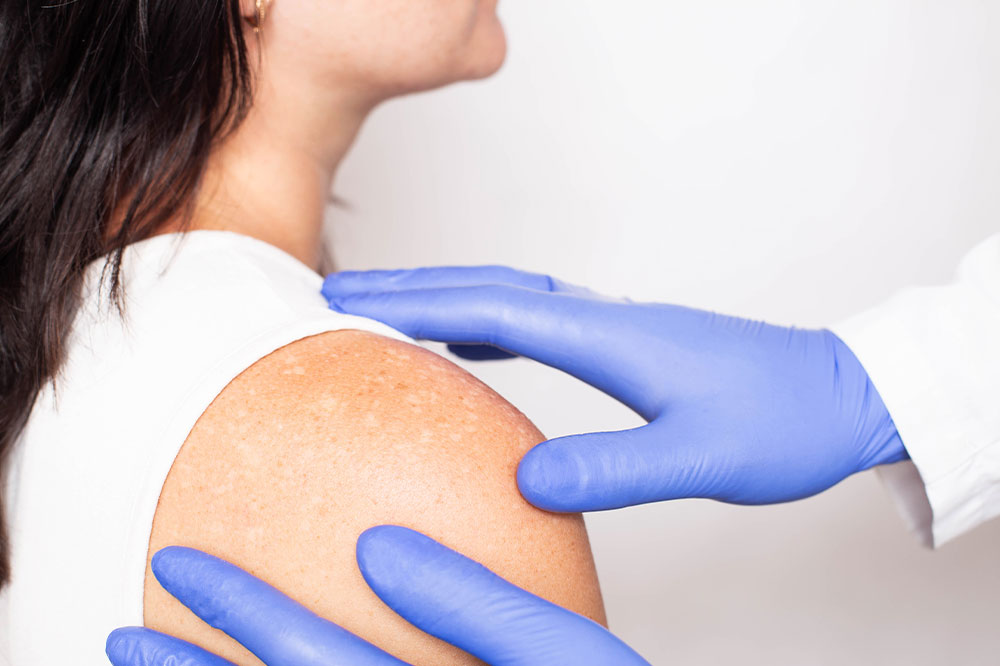Vitiligo – Signs, Causes, and Management Remedies
The color of an individual’s hair and skin is usually determined by melanin. But sometimes, the cells that produce melanin die or stop functioning, and this causes the skin to lose color in patches. This development is known as vitiligo, a disease that affects all skin types. The patches get bigger with time and may also affect other body parts. Here are some signs of vitiligo in adults that one should look for.

Spots and patches of lighter skin
Vitiligo is the effect of the damage and elimination of cells responsible for giving the skin its color. Therefore, one of the first signs of vitiligo in people includes spots and patches of lighter skin all over their body, including the genitals.
White patch formation
When the disease is active, it destroys the cells, resulting in pink or tricolor patches. This creates a zone of tan skin between natural skin color and white vitiligo. However, when the disease is no longer active, it transforms the patches completely white.
Patches inside the mouth or nose
Vitiligo is not limited to a specific section of the skin and may occur anywhere. So someone who develops the condition will notice patches around the mouth, on the lips, and around the nose. Vitiligo may also affect the inside of the nose and mouth.
Sensitivity to sunlight
Sunburns are one of the telltale signs of vitiligo. An individual’s skin with lower pigment content or loses the property turns more sensitive to light. The phenomenon may cause that specific portion to burn quicker than usual. Moreover, one should be mindful of sunburns as the harmful rays may also trigger vitiligo and cause it to spread.
Itchy skin
Another common symptom of vitiligo is itchy skin. Someone who develops the disease for the first time will feel the constant need to itch the affected region. However, the itchy feeling subsides once the disease is no longer active. So while there might be white patches on the skin, the individual may rarely feel discomfort.
Whitening or graying of hair
The graying or whitening of hair is a process that occurs due to multiple factors, including age. However, if an individual notices patches of white or gray hair on their skin, it could be a sign of vitiligo. Eventually, these areas of the skin may also lose color due to lower melanin levels. The disease may also trigger the premature graying of an individual’s hair. In addition, the person may develop a streak of white strands in a particular area on their head. People who suffer from vitiligo may lose color wholly or partially from their eyelashes or eyebrows.
Loss of hearing
Melanocytes are the cells that give hair, skin, and eyes their color. The same cells are also present in the inner ear. Therefore, when an individual develops vitiligo, their body attacks the melanocytes. And studies show that eliminating cells in the inner ear may result in hearing loss.
Changes in eye color
Another early sign of vitiligo is alterations in eye color. Therefore, individuals might notice changes in the color of their eyes relatively quickly. Moreover, on rare occasions, the disease may lead to vision problems.
Signs and symptoms in toddlers
The signs of vitiligo in toddlers are white patches on the skin, commonly noticed on the hands, arms, face, lips, and feet. If the condition develops in babies, one might find signs, including hair whitening. Furthermore, some kids who develop vitiligo early may have patches that do not spread. Others may experience discoloration rapidly and all over the body. While vitiligo may affect each child differently, a few common signs exist.
- The skin loses color and appears lighter than its natural skin color, and may occur in patches and even spread all over.
- Children may develop premature whitening or graying of hair without other known underlying conditions. For example, the early sign of vitiligo could develop on the hair of the eyebrows, eyelashes, and head.
- The first occurrences of vitiligo may occur in crevices and cavities. So kids may also experience hypopigmentation in the oral and nasal cavities.
- Since vitiligo may affect the color of the inner layer of the eyes (retina), one may notice a change in the eye color of a toddler. Discoloration in this body region is also one of the most common signs of the disease at a young age.
Causes
While we know how vitiligo occurs, its source is yet to be determined. However, certain factors, such as an individual’s family history and genes, may trigger the disease. For example, environmental factors such as sunburn, exposure to certain chemicals, injury to the skin, and trauma may also set off an autoimmune response that could destroy melanocytes. Moreover, individuals with an autoimmune disease such as psoriasis, systemic lupus erythematosus, Hashimoto’s disease, or alopecia areata may also be at a heightened risk of developing vitiligo.
Treatment options
Experts are yet to find a permanent cure for vitiligo. However, one could resort to treatment options that could slow its growth. Prescriptions may also help increase the production of melanocytes, which may help improve the appearance of patchy skin by returning faint color to white regions. Since the disease changes one’s appearance, it could make one feel self-conscious, depressed, angry, frustrated, and anxious. Such individuals could sign up for cognitive behavioral therapy to improve their feelings.


